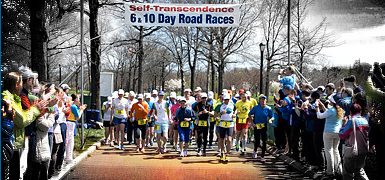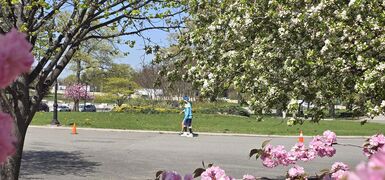Marathon Monk Ends Journey
Genshin Fujinami returned Sept. 18 from his 24,800-mile(40,000km) spiritual journey in the Hiei mountains, a range of five peaks that rise above the ancient capital of Kyoto.

Dressed in his handmade sandals and robe, with a straw raincoat draped over his head, Fujinami was greeted at the end of his journey by a crowd of worshippers, who knelt to receive his blessings at Enryakuji Hoshuin, the temple that guards the sacred tradition. "I entrusted everything to God. I am satisfied," he was quoted by AP.
Since 1885, only 46 "marathon monks" of the Tendai sect have survived the ritual, which dates to the eighth century and is believed to be a path to enlightenment. The last was in 1994. A few have done it twice but many more have not lived to finish.
Finish or die
Traditionally, any monk who can't continue to the end must take his own live, either by hanging or disembowelment.
A rigorous regimen dictates that in each of the journey's first three years, the pilgrim must rise at midnight for 100 consecutive days to pray, run along an 18-mile trail around Mount Hiei -- stopping 250 times to pray along the way. He can carry only candles, a prayer book and a sack of vegetarian food.
In the next two years, he must lengthen the regimen to 200 days. Winters are spent at the temple, doing chores.
The single most difficult task comes in the fifth year when the monk must sit and chant mantras for nine days without food, water or sleep. This trial is called "doiri," or "entering the temple."
In the sixth year, the monk walks 37.5 miles every day for 100 days. And in the seventh, he goes 52.5 miles for 100 days and then 18 miles for another 100 days, before returning to the temple. Otsu city, about 234 miles southwest of Tokyo.
— Taken from www.ultramarathonworld.com




